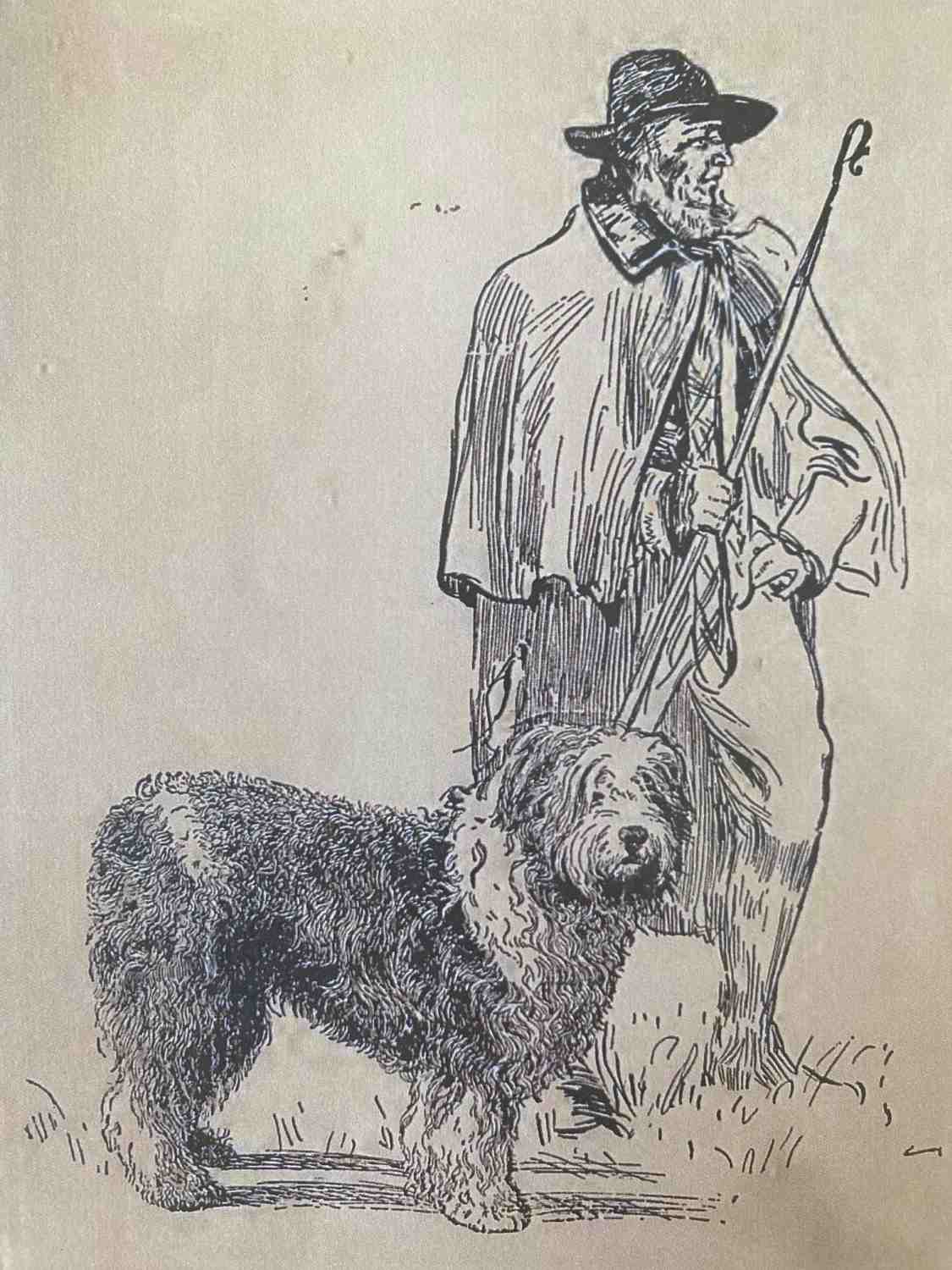Stray dogs and killing of livestock: A case in East Zorra Township
Stray dogs and killing of livestock: A case in East Zorra Township
By Liz Dommasch, Archivist
Humans have kept dogs as pets for centuries. However, it wasn’t until the nineteenth century that people began to embrace dogs as valued and beloved members of the family and welcomed them into their home. With this shift, pet-keeping cemented the strengthening assumption that wandering and stray dogs were unwelcome on the streets. With that said pets, and especially strays still ran wild in the cities as well as in the countryside and would often times wreak havoc. Efforts soon began to rid the streets of dangerous dogs, particularly rabid ones, and a shift was seen in how municipalities dealt with such nuisances.

In 1890, East Zorra Township passed By-law No. 393 which provided pounds, to restrain or regulate the running at large of domestic animals, and to provide compensation for carrying out the regulations made, by imposing fines. In doing so, animals running at large within the limits of the Township would be impounded and fines would be imposed whether damage had been sustained or not. This included all horses, cattle, sheep, swine, or other animals which may be kept on a farm. In 1895, By-law No. 471 was also passed which outlined the role of the pound keeper, and regulations for impounding and fining any animal found running at large or trespassing on another’s property. This By-law noted that any person or person guilty of any infraction under the by-law would be liable on summary conviction before the Justice of Peace and penalties such as fines and even imprisonment in the common gaol (jail) would be enforced.
That same year, Thomas Cole and Peter Munroe, farmers residing on the 10th line of East Zorra, claimed in Police Court that a dog belonging to Thomas Lancaster was responsible for the death of five of their sheep. Both farmers on losing their sheep, applied to the Township Council for compensation. Although the Township would cover the costs of sheep killed, it was only in cases where responsibility could not be fixed upon a particular owner. In this case, as the owner was said to be known, they would need to apply to Mr. Lancaster for the value of the sheep, which was set at fourteen dollars.
Lancaster claimed that at the time of the incident he had examined his dog and found no evidence of it having been at the sheep. However he did propose to kill the dog and if there was mutton inside of it, he would pay half the value of the sheep. If it was proven the dog was innocent, Mr. Munro would need to pay him ten dollars for the dog. As Mr. Munro and Mr. Cole wanted full compensation, the case was brought forth. Ultimately, Police Magistrate Field ordered Mr. Lancaster in the case of Cole vs. Lancaster to pay half the cost of the sheep and have the dog killed within three days. The case brought forth by Mr. Munroe was dismissed as evidence was not sufficiently strong enough to convict the dog of the sheep killing.

In 1910, East Zorra Township passed By-law No. 756 which specifically dealt with the registration of dogs and bitches on a yearly basis with the Township Clerk, as well as enforcement of the running of large of such animals, and ensuring public safety, through such initiatives as muzzling troublesome canines and in worst case scenario putting them down. Due to the prevalence of rabies throughout portions of Western Ontario, a few months later, Council passed another By-law (No. 760) which outlined the restraining and regulating the running at large of dogs for protection of property and safety of human life.
However, even with the By-laws in place, issues still arose with stray dogs. In 1912, By-law No. 786 was passed appointing valuators whose sole job would be to deal with claims of sheep killed and injured by dogs in the said Township. In doing so, the Township would pay claims, only on the report of one or more such valuators, made within the time limited by statute.

As regulations for registering canines, and pet care for one’s dog became more commonplace, including the implementation of such things as spay and neutering, vaccinations, leashes and collars, and even flea medication; a gap emerged between dogs that were considered pets and those that were considered strays. In addition, people were less likely to let their dogs wander by choice like they did before. However, By-laws continued to be enacted to ensure that pets, strays and the public were kept safe. In 1953, By-law No. 1401 was passed which prohibited the running at large of dogs during the Open Session for deer, in order to not only protect the deer and hunters, but the dogs themselves from being shot.
Today, in East Zorra-Tavistock, dogs are prohibited from running at large in the Township. Dogs must be kept on the owner's property or on a leash under the owner's control while off their property. If a dog is found running at large, it will be placed in the pound and the owner will be responsible for paying the fines and impound fees in order to have their animal returned. This practice has become the norm for municipalities across the province.
